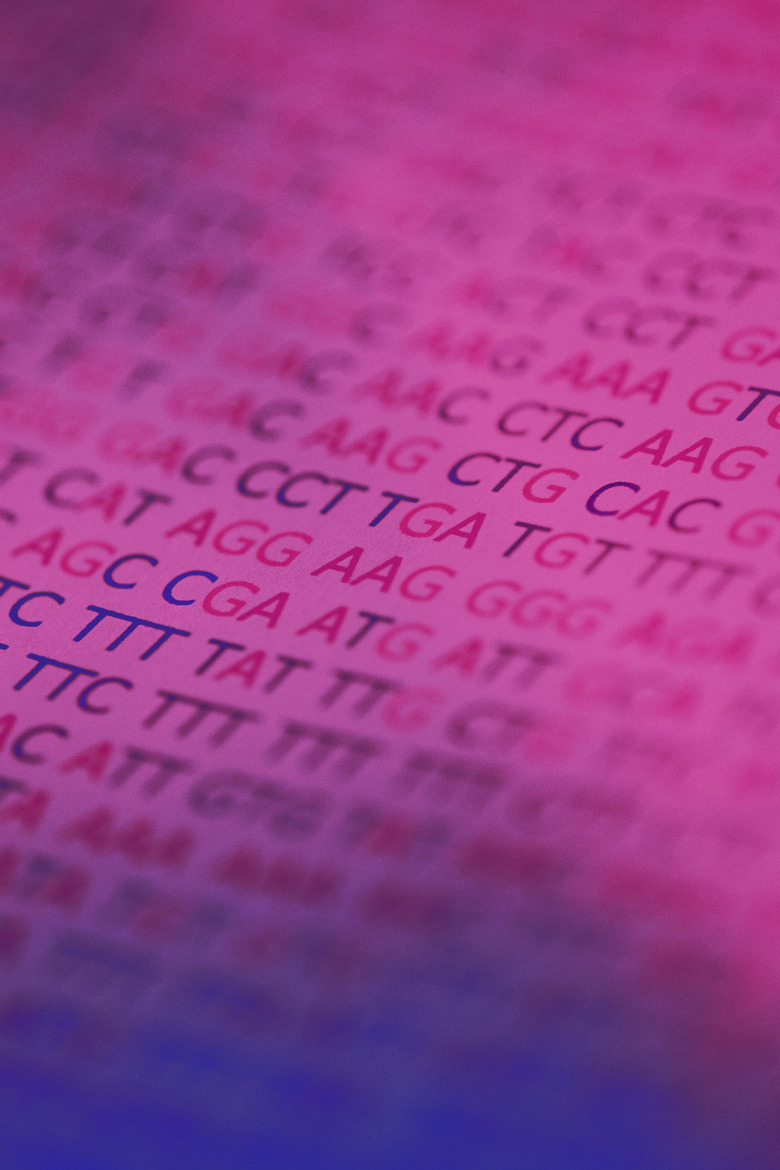Three Examples Of A Single-Allele Trait
Each living organism can be thought of as a collection of traits. Each of these traits is coded for by a gene or genes in that organism's DNA.
Bacteria have only one copy of each gene, plants and most animals have two. When slight variations of the gene exist in the population, each variation is referred to as an allele.
Single allele traits are traits determined by only one allele as opposed to multiple. Some traits, such as eye color, can be determined by more than one allele, but many traits are determined by single genes.
Definition of an Allele
Definition of an Allele
Genes code for particular traits in an individual organism. When different forms of the gene arise as a result of random mutation and/or evolutionary pressures, each form of the gene is called an "allele". When certain traits are determined by only one gene, they're called single gene traits.
A common example of this is attached earlobes. Humans can either have attached earlobes that connect to the side of the head or they can have unattached earlobes.
The gene can be represented by F (the allele for free-hanging earlobes) and f (the allele for attached earlobes). The free hanging allele is dominant, so humans with FF or Ff genotypes will have free-hanging earlobes. An ff genotype will result in someone with attached earlobes.
Allele Fixation
Allele Fixation
You wouldn't want more than one option for most genes. Unless something is amiss, humans are born with two legs, ten fingers and a heart with four chambers. The basic plan for the layout of an organism has only one option for most of its components, because any variation would mean that the organism wouldn't work as well, or at all.
When a gene exists as only a single allele in a population, it is called allele fixation. Polymorphic genes, by contrast, have more than one allele. A 1999 study estimated that 30 percent of human genes are polymorphic.
16S rRNA
16S rRNA
The 16S rRNA gene is a piece of DNA shared by all bacteria. It is highly conserved, meaning its role is so critical that it has only one allele for every population and every species of bacteria. It codes, as the name would suggest, for a piece of rRNA, or ribosomal RNA, which makes up part of the ribosome.
Ribosomes are where proteins are synthesized in the cell, so you can see why the gene hasn't changed much over the millennia.
White Fruit Flies
White Fruit Flies
Highly conserved genes have one allele because they experience strong selection pressures that favor that allele. Small populations can also lose an allele through genetic drift, which is essentially random chance.
Peter Buri did an experiment in which he started with 107 separate populations of 16 fruit flies each, each population having an equal distribution of red-orange and white color alleles. Due to random chance in mating and the small population, the offspring after several generations were either almost all red or almost all white.
Some of the populations reached allele fixation, making color for those populations a single-allele trait.
Alcohol Dehydrogenase in Corn
Alcohol Dehydrogenase in Corn
An experiment in the early 1960s showed the importance of the Adh1 gene, which codes for alcohol dehydrogenase in corn. The gene had only one allele, and the researchers induced a mutation using a mutagen — a substance that causes errors in the DNA copying process.
The plants with the mutation sprouted and grew just fine under normal conditions, but when the roots of the plant were too wet, the plants without alcohol dehydrogenase died. Corn gets waterlogged often enough that all corn plants have the same vitally important version of the Adh1 gene.
References
- Nature: Trait Evolution on a Phylogenetic Tree: Relatedness, Similarity and the Myth of Evolutionary Advancement
- Nature Genetics Supplement: Population Genetics—Making Sense Out of Sequence [PDF]
- University of Leicester: Population Genetics
- Science Direct: 16S Ribosomal RNA
- University of Arizona: Genetic Drift
- Biology LibreTexts: Mendelian Inheritance in Humans
Cite This Article
MLA
Becker, Andrea. "Three Examples Of A Single-Allele Trait" sciencing.com, https://www.sciencing.com/three-examples-singleallele-trait-15361/. 19 June 2019.
APA
Becker, Andrea. (2019, June 19). Three Examples Of A Single-Allele Trait. sciencing.com. Retrieved from https://www.sciencing.com/three-examples-singleallele-trait-15361/
Chicago
Becker, Andrea. Three Examples Of A Single-Allele Trait last modified March 24, 2022. https://www.sciencing.com/three-examples-singleallele-trait-15361/
